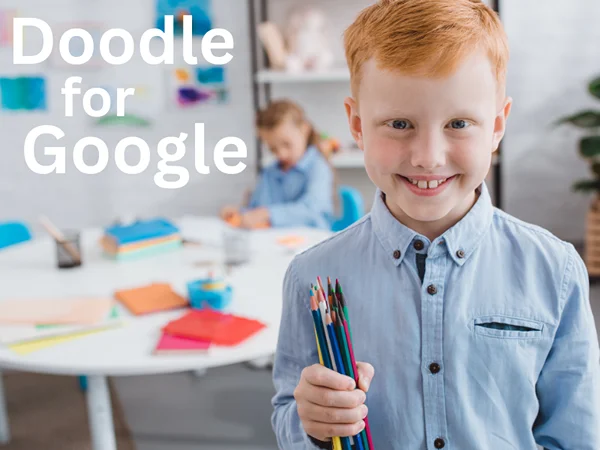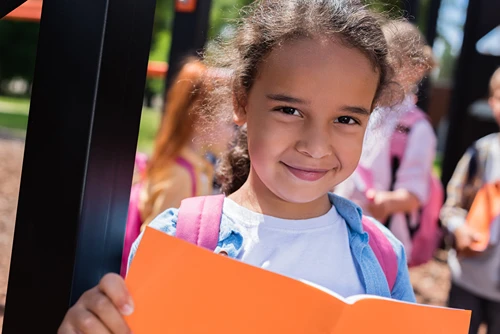We all want our kids to be successful in life. Teaching them to have a rewarding career that keeps them financially secure is a great goal. But to succeed, children need to learn career-building skills.
As parents, we can help our kids learn what they need for the future. Before your child is a graduate seeking a university options, that teaching can begin as early as pre-school.
First, though, we need to understand what skills can help them thrive.
Two Kinds Of Skills Your Kids Need
When we think of job skills, we often think of job-related skill sets, or hard skills. Doctors, for example, need to be well-versed in human anatomy and medicine.
It’s equally important today to have soft skills that appeal to employers. These are the intangible skills necessary to succeed in any job, such as a good bedside manner. They are more akin to positive character traits.
There are several soft skills that employers seek in a candidate. These include curiosity, creativity, a strong work ethic, and problem-solving abilities.
The groundwork for both hard and soft skills begins before they even get to school.
Preschoolers: Laying the Foundation
Little kids have an innate curiosity about the world. You can nurture this trait by helping them to explore jobs that make the world go round. Expose your children to a wide variety of experiences at this age:
- Let them dress up for different careers: firefighter, doctor or nurse, scientist.
- Visit educational or immersive places like museums, nature hikes, or kid-centered science centers.
- Let them watch or read age-appropriate programming and books that focus on different careers to discover their interests and gifts.
You can also teach soft skills:
- Adaptability: Ensure your children can handle a break in their daily routines. Disrupt the schedule from time to time to teach them this skill.
- Creativity: This can be as simple as arts and crafts! Try to find kid workshops outside the home as well as at-home activities.
- Teamwork: Teach your children to work together for chores or while playing games.
Preschoolers may not yet get a good handle on soft skills. Their early school years will help build those skills.
Elementary School: Where Soft Skills Grow
As children interact more with their peers, desired soft skill traits can flourish. Schools that foster the best of these skills help students mature. For example, if a school awards students for kindness, children are encouraged to help others and develop leadership talents.
Hopefully, your child’s school fosters relationships and teamwork in addition to providing academics. If you are worried about this, get your child involved in extracurricular activities. These can help him build team skills, dedication, leadership, respect for others, and more.
At this age, children can learn more about the hard skills needed for a particular career path. Ask them frequently about their desired future career. Help them to discover in-depth what is involved in pursuing that field.
Middle School: Career Planning Begins
By now, you may be able to see areas where your child shines academically. This is the best time to help your child discover his career path. Take a good look at grades, teacher comments, extracurricular activities, and anything that gets your child excited.
For example, if your child gets steady high grades in math or science, she may want to prepare for a job in science, tech, engineering, or math. These STEM careers are some of the fastest-growing fields for college graduates today. Many of these jobs pay well too.
While kids under 14 are often too young to work, some can do volunteer work. Even if this is not in their field, it will give them a good background in hands-on work. All of these things looks good on a resume!
Middle schoolers can also look at specialized high schools that focus on their desired field. Students can study resume examples that suit the industry they are interested in. They can also begin their college search to prepare for high school goals that get future applications noticed.
High School: Skills That Land The Job
Some teachers will tell you that the entire goal of high school is to prepare you to work in the real world. No doubt the most intense preparation begins at this level.
Your teen should be ready for their first job search, and you can assist them. Help them write their first resume for a job that requires little to no experience (stock clerk, YMCA lifeguard). What do you include in a resume? Important items include:
- Key skills, especially soft skills which might be the bulk of their resume.
- Action verbs that highlight what they have achieved so far.
- The goal of a resume is to stand out in the hiring manager’s mind. Teach your teens to share their personality and their unique talents in a serious, professional manner.
Help your teenager to create relationships outside of school so they can build a network full of opportunities. Networking can also provide them opportunities such as job shadowing, giving them a good idea of what a job entails beyond the required hard skills.
For example, if your teen wants to become a nurse, there is a clear educational path but several key soft attributes they need as well. Teens can study a cover letter for nursing to learn what these skills are while learning how to write such a letter.
A Final Note for Kids
Setting Realistic Goals for a Your Future
For many people, a brand new year means a fresh start. For others, there is anticipation about upcoming events, such as another birthday or a special holiday trip. As one year rolls into the next, you may be looking for clues as to what the future holds. Here are 100% genuine true predictions you can count on.
1. You will hear or read something that will hurt your feelings.
Unfortunately, this is a fact of life. Remember that everyone sees the world differently and everyone has a different opinion. And just because you hear or read something that stings you, the commenter might not have meant anything mean.
The key is to not take things too personally. Expect that people will disappoint you from time to time. Humans make mistakes and often do not intend to hurt others.
2. You will try to reach a goal and fail.
Winning at anything means taking steps along the way and stumbling. Every time you fail at reaching a goal, you get close to actually getting there.
Many famous and successful people have said that there is no success without failure. It is an essential stepping stone to greater things as long as you keep on trying.
3. You will try to reach a goal and succeed.
It might be a small goal, like getting a great mark on a pop quiz or finally being able to make a super-serious friend laugh at one of your jokes.
Every time you try to do something, it makes you stronger and more confident. Most people make lists of huge, towering resolutions and ultimately break them before the year has even started. Make lists of small goals and soon you will find bigger goals easier to tackle.
4. Something you do will have a major effect on your life.
It could be a friend that you make. It could be some nice act you perform for another person that changes how you feel about yourself. It could be a new skill you learn or an achievement in school or online eLearning.
You might not even know that this “thing” is important until years later. Still, this year will make a difference for years to come. Think about that when you get up each morning.
5. One of your idols will do or say something idiotic.
Yup. That’s a guarantee. As a matter of fact, all of us will do or say something idiotic in the future.
It could be in person or online, but every single living human being will say or do or post something that will look silly to others. That’s why everyone of us should expect to say, “I’m sorry,” or “I’ve made a mistake” at least once.
6. You will make at least one decision between right and wrong.
Doing the right thing in the face of adversity is never easy. You may be approached to cheat on a test or be tempted to ignore a good friend because of peer pressure.
You may see someone being bullied and want to help them but be faced with fear of what will happen if you do. Accept that you will make mistakes like every other human on the planet. The important thing is to decide now the kind of person you want to be and surround yourself with the type of people that will help you “be that person”.
7. You will work and you will play – and you can have fun doing both.
A good life is about balance. All play and no work brings discontentment. We all need goads to strive for. All work and no play will stress you out and is not healthy. Plan now to make sure there is balance in your life… between sports and school, between family and friends and even your own “alone time”.
The next year is going to be an interesting one. The person you are when it begins is not the person you will be when you celebrate the next new year.
Life for a child is about making small changes with the help of your parents. All those changes add up to exciting growth to ensure you are read to choose a lifelong career when the time comes. In the meantime, enjoy the changes in your life and around the world.









